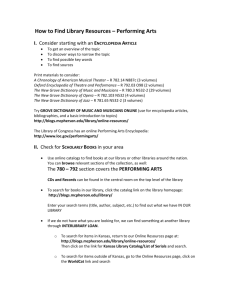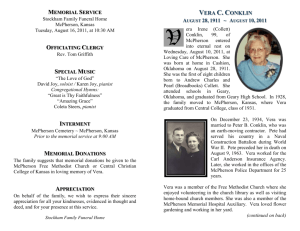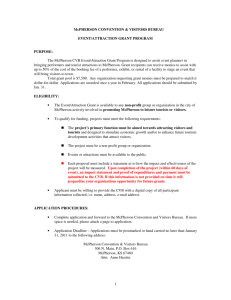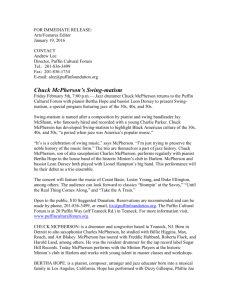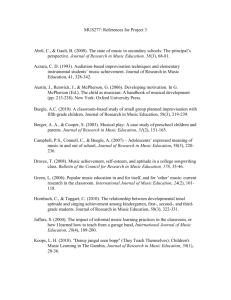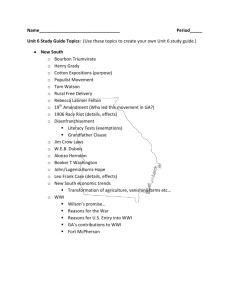September, 2009 Book Reviews for James M. McPherson's Drawn
advertisement
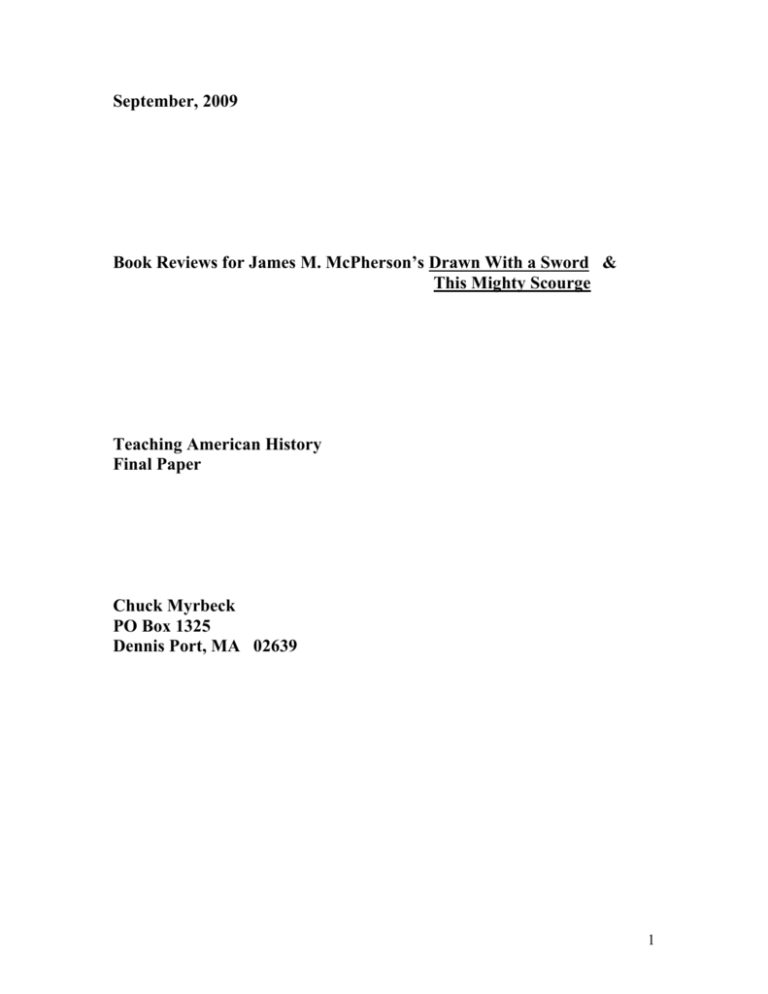
September, 2009 Book Reviews for James M. McPherson’s Drawn With a Sword & This Mighty Scourge Teaching American History Final Paper Chuck Myrbeck PO Box 1325 Dennis Port, MA 02639 1 For my final paper, I chose to read and review two of James M. McPherson’s books, Drawn With a Sword, and This Mighty Scourge. Both books are collections of Jim McPherson’s essays and both titles come from the same speech, Lincoln’s second inaugural address. McPherson traces the evolution of Civil War scholarship through present day. Combined with his own research, McPherson’s essays are arranged in a cohesive pattern of chapters covering broad themes. A major theme in both books how multiple meanings of slavery and liberty changed during the war. Lincoln’s goal upon taking office was to fight a limited war to preserve the experiment of representative government begun by the Founding Fathers. A republic could not be broken up any time a minority did not agree with the majority. By the middle of 1862, President Lincoln had come to agree with Frederick Douglass; “To fight against slaveholders, without fighting against slavery, is but a half-hearted business, and paralyzes the hands engaged in it….War for the destruction of liberty must be met with the war for the destruction of slavery.” (Sword, page 72) President Lincoln, who previously had rescinded John C. Freemont’s order to emancipate slaves in Missouri, now waited for a Union victory to announce his own Emancipation Proclamation. Now a limited war to preserve the Union, transformed into a total war where northern soldiers destroyed and confiscated anything that supported the Confederacy and led to the establishment of black regiments to fight the South. Another example illustrating divergent meanings of liberty occurs in the last chapter of This Mighty Scourge (page 220-221) McPherson cites Lincoln’s speech in Baltimore after the passage of the Thirteenth Amendment. Using a parable of a wolf that clutches a black sheep by the throat that is freed by a shepherd, Lincoln notes the sheep views the shepherd as a liberator and the wolf views the shepherd a destroyer of liberty. 2 “Hence we behold the processes by which thousands are daily passing from under the yoke of bondage, hailed by some as the advance of liberty, and bewailed by others as the destruction of all liberty.” A second theme is the lasting impact of the Civil War on our national character. In the preface of Drawn With the Sword, McPherson uses a quote made by Mark Twain, (The Civil War had) “uprooted institutions that were centuries old, changed the politics of a people, and wrought so profoundly upon the entire national character that the influence cannot be measured for short of two or three generations.” Almost twenty years after the war, Twain said of how the South viewed the war “what A.D. is elsewhere; they date from it”. (Battle Cry of Freedom, Page viii) McPherson’s essay in Scourge on “Long Legged Yankee Lies” shows how the South dominated legacy and historical writing about the war through the first part of the twentieth century. Almost all southern states created their own textbook commissions approve history books for public schools that were sympathetic to the South. Texts had to cite states rights and not slavery as the cause of the war. Major movies such as “Birth of a Nation” and “Gone With the Wind” reflected the lost cause of the glorified South. Even in more recent times Ken Burn’s The Civil War was criticized for implicating slavery as the cause for the war. One of the areas McPherson clarified for me was the reputation of the Union military leadership. In his lectures he referred to the Union “A-team” (Grant, Sheridan, and Sherman). And how the war momentum swung when finally matched up with the South’s “A-team” (Robert E. Lee). Ulysses S. Grant’s reputation as a butcher is not deserved when compared to Lee. McPherson points out Lee’s army had a higher casualty rate for the war than Grant’s. (Scourge page113). More specifically, a comparison of 3 each general’s admitted worst mistake, (for Lee Pickets charge, for Grant Cold Harbor), Grant compares favorably. On another exaggerated charge is Grant’s excessive drinking. McPherson points out Grant did have a problem when there was nothing going on as was the case early in his military career when he was stationed to a remote outpost in California and resigned his commission. This problem reoccurred during the long siege of Vicksburg and was used by his political rivals to discredit him. In preparation for and during battle, Grant proved to be extremely calm and clear, and decisive with his orders. Lincoln recognized this and stuck with Grant over advice from the General’s detractors. William T. Sherman is another general the “lost causers” may have held too large a sway with me before being exposed to Jim McPherson. In the essay Hard Hand of War (Scourge Pages 123-129), I realized Sherman’s “march to sea” was a qualified total war and not a complete act of barbarity. Sherman stated his goal of psychological warfare was to “make them so sick of war that generations would pass before they would again appeal to it” (Scourge Page 124). Sherman’s armies destroyed property, however, killings and rapes of civilians were extremely rare. This is different from the total war of World War II where bombers annihilated civilian populations. An area that of great interest to me was McPherson’s take on some of the video sources I use in my classroom. First was the movie “Glory” critiqued in Drawn With the Sword in an essay entitled “The Glory Story”. He cites several inaccuracies, depicting Frederick Douglass as a much older man than he was, portraying the Fifty-fourth as being made up of former slaves (most were freemen), and the circumstances of Shaw receiving the offer of command of the Fifty-fourth. At our summer sessions he told us, “Glory” 4 was maybe the best Civil War movie ever. The overall theme, the story of 189,000 black soldiers, many former slaves, fighting for freedom and transforming America and changing the South forever is a strong endorsement to continue to use “Glory” as a teaching tool. One other tie in I will use was the connection McPherson made to the New York draft riots which happened very close to the attack on Fort Wagner. One of the men of the Fifty-forth, Robert Simmons died at Fort Wagner, while his nephew was many black victims of the draft riots. The two segments of “The Civil War” I have most used in class are the fall of Richmond (the pictures are reminiscent of Hiroshima) and Andersonville (prelude to the holocaust). One segment I am considering adding is Antietam. I will use Burns as in introduction to a lesson based on the essay “The Saratoga That Wasn’t: The Impact of Antietam Abroad” (Scourge, Pages 65 -75). McPherson emphasis is the impact the northern blockade of southern ports on the global cotton market. Both France and Britain considered negotiating a peace that would open up their starved cotton mills and most likely leave slavery intact in the United States. One more major Confederate victory would do it, just like Saratoga inspired the French to side with the Patriots during the Revolutionary War. The Ken Burns segment will emphasize the regional impact focusing on Emancipation Proclamation. McPherson’s essay goes along with one of Peter Kolchin’s major themes of putting the Civil War in a more geographical or global context. During the summer, I watched all of Ken Burn’s “Civil War” again. During some of the “extra commentary” sections, I realized our history education had some commonalities. Most of the classes we took emphasized the causes and the effects of the 5 Civil War. The war itself I mostly learned about on my own. The first serious book I read on the Civil War after college was Michael Shaara’s Killer Angels, which introduced me to Joshua Lawrence Chamberlain, which Burns states got him interested in the Civil War. Jim McPherson addresses some of these issues in the last essay of Draw With a Sword, titled “What’s The Matter With History?” Problems such as historians writing for other historians, social historians becoming too specialized and often ignoring areas outside their specialty like military history. Ken Burns, in McPherson’s estimation succeeded in producing a “narrative synthesis” between the “old school” and the “new history”. Burns documentary includes “new” material on “women, labor, minorities, and the social transformation” (Sword, pg. 245), while incorporating the narrative (old) format often neglected in “new history”. McPherson is listed as one of the historical consultants in the credits of “The Civil War”, but there are criticisms. Using photos not related to the text for one. Burns admits this in one of his commentaries, but qualifies by stating any pictures of dead soldiers matched up to the appropriate battle. McPherson also challenges Shelby Foote’s contention “the North fought the war with one arm behind its back…I don’t think the South ever had a chance to win that war” (Sword, pg 116). McPherson counters this by pointing out the Lee concentrated resources on Virginia; the war was lost in the west. Jim McPherson ends up confronting the difficulty of writing the ultimately very successful book Battle Cry of Freedom which had sold over 600,000 copies by 1995 and won a Pulitzer Prize. As a volume of the Oxford History of the United States series, the goal was to present the “scholarship of this generation” to the general public. He stresses how much easier it is to write in a thematic or topical format as opposed to a narrative 6 which requires a chronological approach. “All events are important and take place on several planes simultaneously: military campaigns and battles, diplomacy, political, economic, social, diplomatic, in both the Union and the Confederacy and in Europe as well” (Sword pg. 249). I believe both Draw with the Sword, and This Mighty Scourge add to Jim McPherson’s narrative of the Civil War and both book and all the individual essays can stand on their own. All I would highly recommend. Post script; Two observations regarding Jim McPherson’s analysis of recent scholarship. He critiques William Freehling’s 2002 publication The South vs. the South (Scourge pgs. 45-46). Jim finds fault with Bill’s contention that fifty percent of all Southerners opposed the Confederacy. Freehling contends that whites only made up half of the South’s population and all blacks opposed the Confederacy. McPherson believes even unwilling slave labor supporting the Confederate cause must be counted in the Confederate column. He puts the split at 75/25 in favor as opposed to Freehling's 50/50 split. I would like to see that debate! Lastly, I did notice that Jim McPherson notes Michael Burlingame’s The Inner World of Abraham Lincoln (Scourge pg. 190) in a discussion on Lincoln’s former law partner and biographer William Herndon research on an early romance Lincoln had with Ann Rutledge. McPherson recognizes the work of Douglas Wilson who examines Herndon’s twenty-four sources that knew both Lincoln and Rutledge and concluded that twenty-two said there was a relationship. It will be interesting to get Burlingame’s take. 7 Go to CCC TAH Web Site 8

